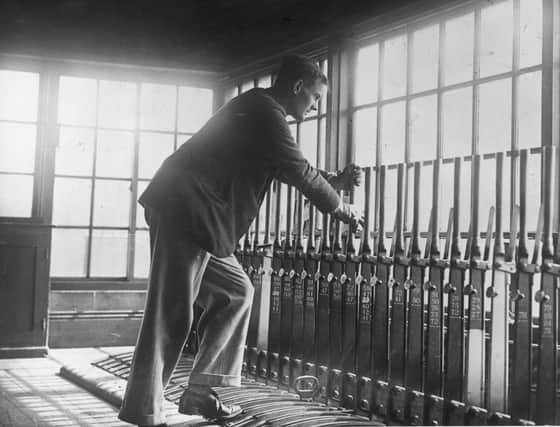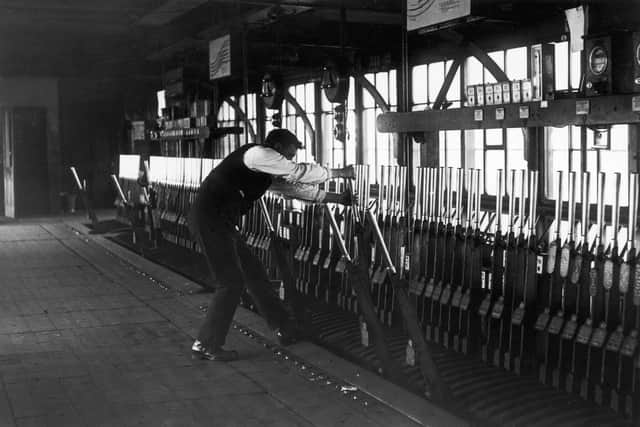Nostalgia: End of the line for Britain’s signal boxes


They have long been replaced by safer and more modern apparatus, but as these archive pictures demonstrate, the trackside signal box is a uniquely enduring image of Britain in the early 20th century.
The familiar raised wooden structures actually date from around 1860, when they evolved from the huts and towers formerly used by policemen, and from the semaphore towers erected during the Napoleonic Wars. Before their widespread adoption, trains were kept apart only by predetermined intervals of time and distance.
Advertisement
Hide AdAdvertisement
Hide AdThe boxes had two storeys. Upstairs was the operating room, with a view over the track and a bank of levers which controlled not only the mechanical flags but also the points on the railway track. The two were closely interlocked, making it impossible, in theory, for the points to be set without the appropriate signal also being in place.


Below was the “locking room”, from which the rods and wires that controlled the points were fed through a gap in the front wall.
In an era before nationalisation, the installation process was fiercely competitive, with rival companies producing different systems and frequently engaging each other in legal disputes.
By the end of the war, there were some 10,000 mechanical signal boxes in operation. But as steam gave way to diesel, electric lights began to replace the mechanical flags and power boxes covering wide areas took the place of individual controllers, the number dropped precipitously. By 1970, only 4,000 remained and perhaps a tenth of that number today. Within the next two decades, the last will have been removed from active service on the public main lines.
Advertisement
Hide AdAdvertisement
Hide AdSupport The Yorkshire Post and become a subscriber today. Your subscription will help us to continue to bring quality news to the people of Yorkshire. In return, you’ll see fewer ads on site, get free access to our app and receive exclusive members-only offers. Click here to subscribe.
Comment Guidelines
National World encourages reader discussion on our stories. User feedback, insights and back-and-forth exchanges add a rich layer of context to reporting. Please review our Community Guidelines before commenting.